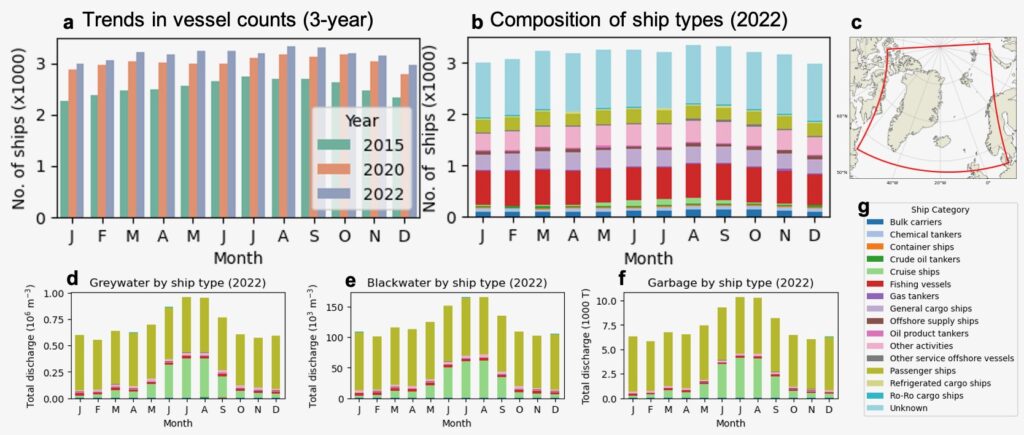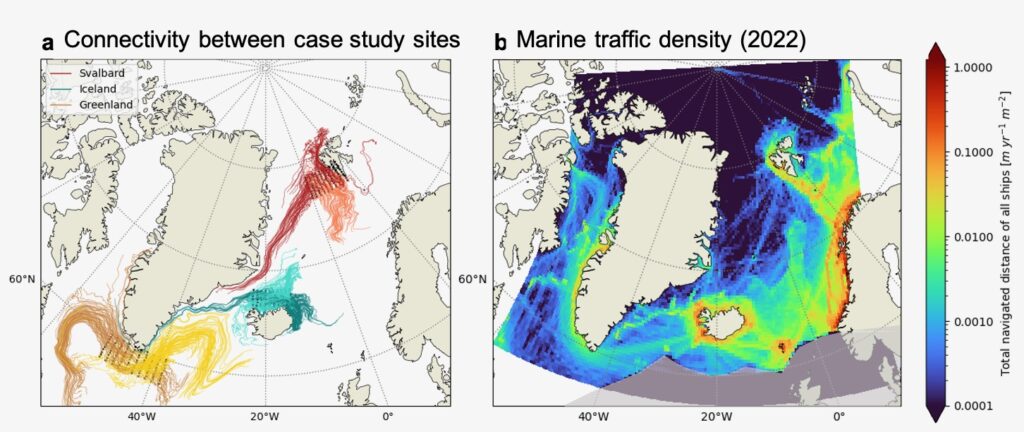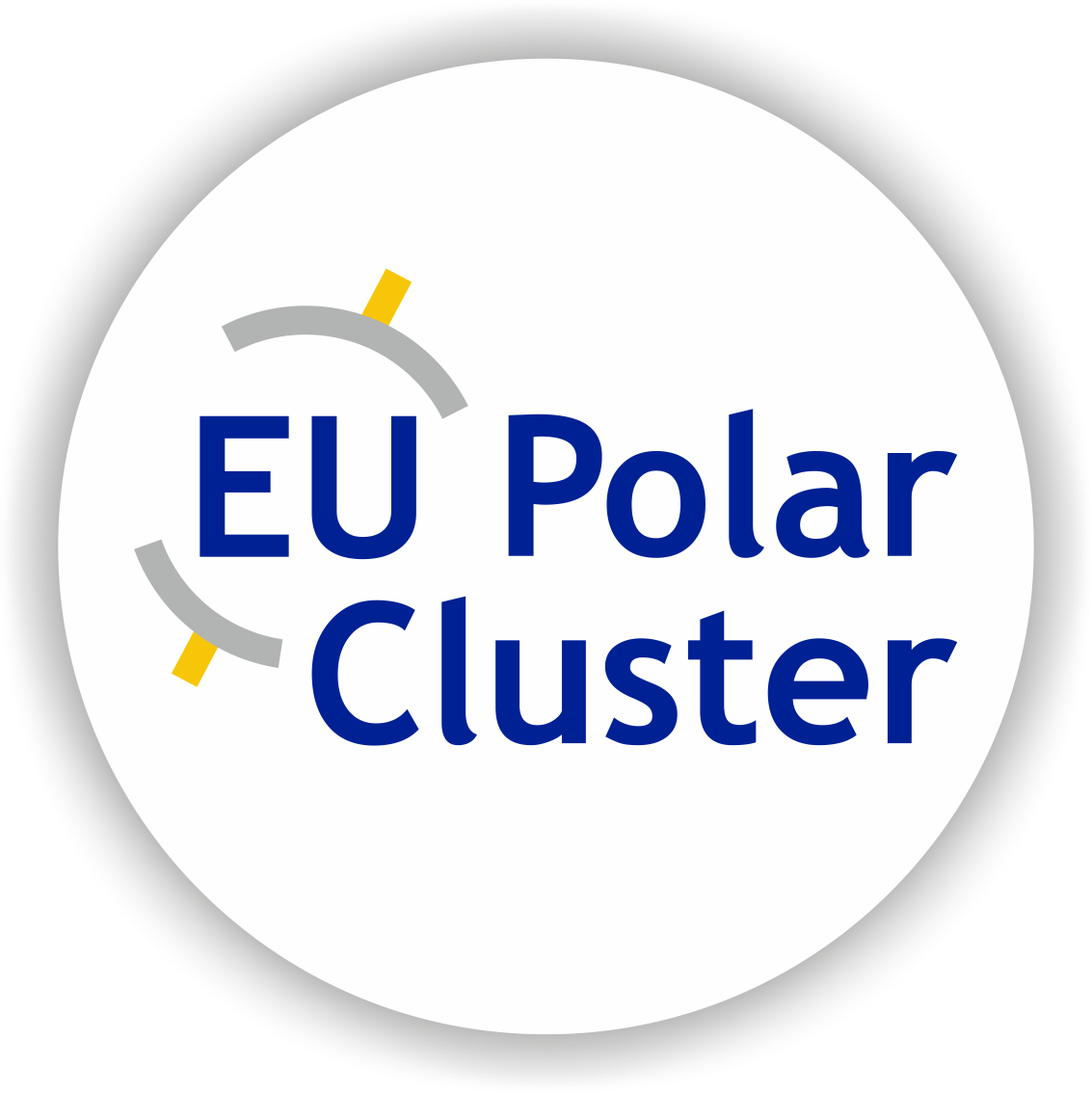The North Atlantic Arctic region is characterized by significant connectivity between its oceanic subregions, driven by both human activity and natural oceanographic processes.
On the one hand, growing ship traffic, particularly along emerging and established Arctic shipping routes connects ports and coastal communities. However, the ship traffic along these connections is also a source of pollutants. For example, by discharging wastewater vessels add nutrients, pharmaceuticals, as well as micro- and nanoplastics to the environment.
On the other hand, powerful ocean currents, like the North Atlantic Drift and the East Greenland Current, create physical and ecological linkages by transporting water masses, heat, nutrients, and marine organisms across vast distances. These same currents also facilitate the long-range transport of pollutants, including contaminants originating far outside the Arctic.
Together, these interconnected pathways shape the region’s environmental health, economic potential, and geopolitical significance.





